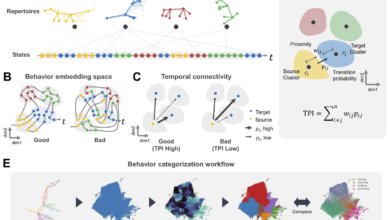Warehouse Robotics Market Advancements Highlighted by Size, Global Growth Trends, Forecast Report- Industry Outlook to 2031

The market for Warehouse Robotics was valued at approximately USD 4.93 Billion in 2023. Over the course of the forecast period (2024–2031), the market is expected to develop at a compound annual growth rate (CAGR) of 19.6%, reaching a value of USD 19.05 Billion by 2031.
The market is expanding as a result of factors such as the expanding retail and e-commerce sectors, a labor scarcity, and the growing need to boost warehouse operations’ throughput. Warehouse robotics replaces dangerous tasks that endanger personnel, improving facility safety.
𝐘𝐨𝐮 𝐜𝐚𝐧 𝐜𝐡𝐞𝐜𝐤 𝐒𝐚𝐦𝐩𝐥𝐞 𝐑𝐞𝐩𝐨𝐫𝐭: ➡️ www.intellectualmarketinsights.com/downloa…IMI-001625
The proliferation of websites and options in the e-commerce sector leads to technological advancements. Technology like blockchain, augmented reality, virtual reality, machine learning, and artificial intelligence (AI) are assisting marketers in improving the consumer experience when they shop. For the previously mentioned rationale, the companies in the warehouse robotics market are always searching for innovative ways to lower operating expenses, delivery times, and worker dangers. Robots in the e-commerce industry automate warehouses, providing economical and intelligent alternatives to human labor. It is therefore expected that the expanding e-commerce industry will propel market expansion.
Robots are used in the packaging and shipping industry to automate a variety of processes, including loading, delivery, and unloading. To lessen their reliance on labor, the companies in the warehousing sector are turning to automation technologies. Furthermore, when performing dull repetitive jobs that take up people’ time, robots are less likely to make mistakes and need less effort. They give strength, efficiency, and knowledge to support workers in carrying out strenuous and hazardous jobs, ensuring their safety while boosting output.
The market participants are concentrating on cutting expenses and improving warehouse operations. Errors in delivery, picking, and transportation result in increased expenses and lost revenue, which takes a significant amount of time and money. Additionally, businesses choose warehouse automation to remove performance constraints and simplify procedures. Warehouse robots has aided organizations in meeting order quality standards, standardizing protocols and procedures based on essential requirements for diverse warehouse operations, and improving operational productivity.
Market Dynamics:
Market Drivers:
Rising Demand for Automation in E-commerce Fulfillment
- The growing need for automation in online shopping fulfillment processes is driving the market for warehouse robotics. Retailers and logistics firms are under greater strain to meet customer expectations for quick and effective order fulfillment as a result of the exponential expansion of e-commerce sales. Warehouses and distribution centers may automate repetitive operations like picking, sorting, packaging, and inventory management with the help of warehouse robotics systems like autonomous mobile robots (AMRs), robotic arms, and automated guided vehicles (AGVs). E-commerce businesses can improve order accuracy, expedite delivery, save labor costs, streamline warehouse operations, and increase throughput and fulfillment speed by implementing robots technologies. Warehouse robots’ solutions are in high demand due to the requirement for expedited order processing, scalability, and operational efficiency in e-commerce logistics. This demand is driving innovation and acceptance in the warehouse robotics industry.
Labor Shortages and Rising Labor Costs
- The logistics & warehousing industry’s workforce shortages and growing labor expenses. Conventional physical labor-intensive warehouse operations encounter difficulties such a lack of workers, high employee turnover, and rising pay pressure, especially during the busiest times of the year and times of economic expansion. By automating physically taxing and repetitive operations, decreasing the need for manual labor, and supplementing human workers with robotic support, warehouse robotics provide a way to overcome these obstacles. Warehouses may reduce the negative effects of labor shortages and growing labor costs on operational efficiency and profitability, maximize staff productivity, and enhance workplace safety by utilizing robotics solutions. The market demand for robotic warehouse solutions is driven by the need to address labor difficulties and improve operational resilience. This, in turn, promotes acceptance and expenditure on automation technology throughout the storage and logistics sector.
Market Trends:
Emergence of Collaborative Robotics
- The Cobots product or collaborative robotics, have become a major player in the warehouse robotics business. In order to accomplish jobs that call for dexterity, flexibility, and human interaction, collaborative robots are made to operate alongside human beings in warehouse settings. Because cobots have sophisticated sensors and safety measures that enable them to function securely close to human workers without endangering them, they differ from standard industrial robots, which are frequently confined to cages or restricted work zones. In order to help with operations like order picking, packaging, palletizing, and inventory management, collaborative robots are being used in warehouses more and more. Collaborative robots increase flexibility, safety, and productivity in warehouse operations while freeing up human workers to concentrate on higher-value jobs that call for judgment and decision-making from humans. Collaborative robotics usage is anticipated to increase as the need for flexible and adaptive automation solutions grows, spurring innovation and market expansion in the warehouse robot’s industry.
Integration of Artificial Intelligence and Machine Learning
- The adoption of artificial intelligence (AI) & machine learning (ML) technology into robotic systems is the warehouse robotics market. Warehouse robots can now evaluate vast amounts of data, gain expertise, and make decisions on their own to enhance warehouse operations thanks to AI and ML algorithms. Robotic systems with AI and ML skills may predict demand changes, adjust to changing conditions, design routes more efficiently, and enhance performance over time. Furthermore, robots can see and understand their environment, identify things, avoid barriers, and carry out difficult jobs accurately and efficiently thanks to AI-powered vision systems. The amalgamation of artificial intelligence and machine learning technologies amplifies the intelligence, self-sufficiency, and proficiencies of warehouse robotics systems, hence facilitating their optimal functioning in intricate and capricious warehouse settings. The capabilities of robots for warehouses are anticipated to develop as AI and ML technologies progress, propelling market expansion and opening up new use cases and applications in the warehouse robotics space.
Market Restraining Factors:
High Initial Investment Costs
- The significant upfront expenses of implementing robotic systems in the warehouse’s operations are driving the warehouse robotics market. Significant up-front financial outlays are necessary for the implementation of warehouse robotics solutions, including those associated with the acquisition of robotic hardware, software integrating, system customisation, and deployment. Furthermore, in order to facilitate robotic automation, warehouses might have to make investments in infrastructural modifications like adding sensors, cameras, and networking equipment. Some warehouse operators may find it difficult to implement due to the significant initial investment expenses, particularly small and medium-sized enterprises with tight budgets. Warehouses may be discouraged from investing in robotic automation systems due to concerns about payback durations, technology obsolescence, and return on investment (ROI). This could hinder the growth of the warehouse robotics market and its acceptance.
Warehouse Robotics Market Players Analysis:
- ABB
- Bastian Solutions LLC
- Daifuku Co. Ltd.
- Dematic
- Fetch Robotics Inc.
- Honeywell International Inc
- KNAPP AG
- KUKA AG
- OMRON Corporation
- YASKAWA Electric Corporation
- FANUC Corporation
Warehouse Robotics Market Players & Competitor Analysis: The report covers the key players of the industry including Company Profile, Product Specifications, Production Capacity/Sales, Revenue, Price and Gross Margin 2024-2031 & Sales with a thorough analysis of the market’s competitive landscape and detailed information on vendors and comprehensive details of factors that will challenge the growth of major market vendors.
Warehouse Robotics Market Segmentation Analysis:
By Product
- Mobile Robots
- Articulated Robots
- Cylindrical Robots
- Scara Robots
- Parallel Robots
- Cartesian Robots
By Function
- Pick & Place
- Palletizing & De-palletizing
- Transportation
- Packaging
By Component
By Software
- Pick & Place
- Warehouse Management System
- Warehouse Control System
- Warehouse Execution System
By Application
- E-commerce
- Automotive
- Consumer Electronics
- Food & Beverage
- Healthcare
- Others
The report also helps in understanding Global Warehouse Robotics Market dynamics, structure by analyzing the market segments, and project the Global Warehouse Robotics Market size. Clear representation of competitive analysis of key players by type, price, financial position, product portfolio, growth strategies, and regional presence in the Global Warehouse Robotics Market make the report investor’s guide.
Access this Report: ➡️ www.intellectualmarketinsights.com/checkou…rency=2800
Regional Snapshots:
By region, Insights into the markets in North America, Europe, Asia-Pacific, and the rest of the world are provided by the study. The Asia Pacific region is anticipated to maintain its position as the leader for the duration of the projection period, with the highest revenue share in 2022. The market has expanded due to the increasing number of warehouse robotics installations in the region and the presence of significant companies such as TOSHIBA CORP., Fanuc Corporation, Yaskawa Electric Corporation, Singapore Technologies Engineering Ltd., and many more. Additionally, it is anticipated that the region’s manufacturing, fast-moving consumer goods, and retail sectors would all continue to expand, offering the market significant opportunities for expansion.
The region of Latin America is predicted to have the highest CAGR between 2023 and 2030. The area offers lucrative opportunities for growth because of a significant upsurge in the e-commerce industry. The larger companies focus on entering a specific area in order to improve the market. For instance, to expand into the Latin American market, the autonomous mobile robot (AMR) technology firm Geek+ announced in July 2022 that it will be collaborating with Körber Supply Chain. The industry is expected to have profitable growth prospects due to the augmented expenditure on research and development.
Warehouse Robotics Market Report is also available for below Regions and Country Please Ask for that
North America
Europe
- Switzerland
- Belgium
- Germany
- France
- U.K.
- Italy
- Spain
- Sweden
- Netherland
- Turkey
- Rest of Europe
Asia-Pacific
- India
- Australia
- Philippines
- Singapore
- South Korea
- Japan
- China
- Malaysia
- Thailand
- Indonesia
- Rest Of APAC
Latin America
- Mexico
- Argentina
- Peru
- Colombia
- Brazil
- Rest of South America
Middle East and Africa
- Saudi Arabia
- UAE
- Egypt
- South Africa
- Rest Of MEA
Points Covered in the Report:
- The points that are discussed within the report are the major market players that are involved in the market such as market players, raw material suppliers, equipment suppliers, end users, traders, distributors and.
- The complete profile of the companies is mentioned. And the capacity, production, price, revenue, cost, gross, gross margin, sales volume, sales revenue, consumption, growth rate, import, export, supply, future strategies, and the technological developments that they are making are also included within the report. This report analysed 12 years data history and forecast.
- The growth factors of the market are discussed in detail wherein the different end users of the market are explained in detail.
- Data and information by market player, by region, by type, by application and., and custom research can be added according to specific requirements.
- The report contains the SWOT analysis of the market. Finally, the report contains the conclusion part where the opinions of the industrial experts are included.
Browse this Report: ➡️ www.intellectualmarketinsights.com/report/…imi-001625
News From
Category: Industry Reports & Market Analysis Profile: IMIR Market Research Pvt. Ltd. takes no responsibility for any incorrect information supplied to us by manufacturers, users, or external databases. AllI MIR Market Research Pvt. Ltd. takes no responsibility for any incorrect information provided to us by manufacturers, users, or external databases. All trademarks, copyrights and other forms of intellectual property belong to their respective owners and may be protected by copyright. Under no circumstance may any of these be reproduced in any for …
This email address is being protected from spambots. You need JavaScript enabled to view it.



